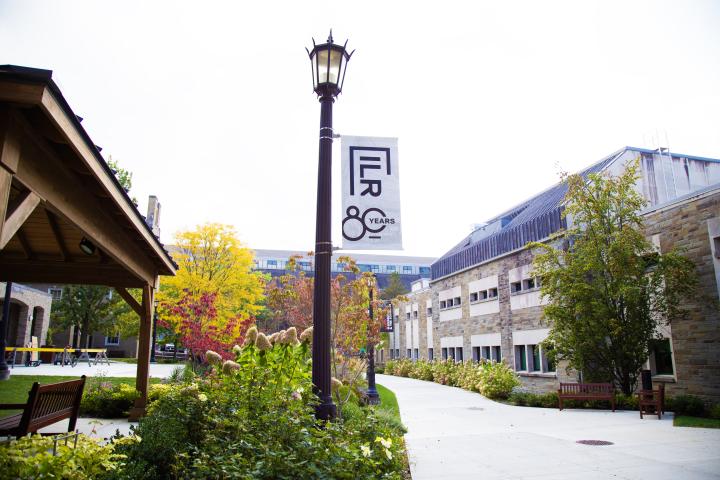
Big Data’s Workplace Role
ILR Senior Lecturer of Statistics Liz Karns has spent the past year looking at different kinds of algorithms, going from Excel data sheets into big data and machine learning.
“For me, this is like a dream team that has been assembled that I get to ask questions of about the things that I have been thinking about for the last year,” Karns said.
The “dream team” of HR industry leaders participated in a panel called “Is It All in the Numbers?” on April 20 in the ILR Conference Center.
In addition to Karns, the panel included Chris Collins, HR associate professor and director of CAHRS; Tami Lamp MILR ’96, chief people officer of Icertis; Mark Faber ’81, vice president, corporate counsel, Cyber and Privacy Law, for The Prudential Insurance Company of America; Deborah Muller ’87, CEO of HR Acuity, and Christy Pambianchi ’90, senior vice president of human resources at Corning Incorporated.
While the idea of big data in HR is enticing, much of data collected by companies may provide questionable insights, according to Collins.
“A key problem is that HR and people data may not be the same across all their different business units or all their employees because they have been put together through mergers or offices put data together differently, which makes it hard to compare outcomes across the organization,” Collins said.
“Further, much of this data may be poor measures of the underlying concepts, making it hard to draw strong conclusions from any analyses.”
Data can be used to create a better workplace and find problematic behavior.
“HR plays a really big role of what we can do different,” Muller said. “Technology can help look at behavior and see if you have a Matt Lauer in your organization.” Lauer was fired by NBC over sexual harassment allegations.
Decisions by companies can be improved by utilizing data.
“It can help define reality,” Pambianchi said. “Data can be something that can bring people together about what the facts are. Data can be useful for any information assessment.”
New forms of analytics can also remove bias in organizations.
“From a legal standpoint, HR data analytics can remove the human element that leads to personal bias,” Faber said. “On the other hand, it can perpetuate bias if the data being used already contains bias because your workforce is not diverse.”
Staying up on the latest technology is necessary for professionals in a world driven more by technology.
“You need to understand the tools,” Lamp said. “You must know Excel and collaboration tools. Stay up on current technologies and stay strong on statistics and data analytics.”
Faber said, “Because privacy and technology are so intertwined, you can’t understand and evaluate privacy issues without understanding the underlying technology. I am not an engineer or a data scientist. I need technology explained to me in order to do my job. I would recommend students take as many technology courses as possible.”
Faber also encouraged students to branch out from their majors. “Cornell is such a large university with so many different course offerings. Take advantage of that while you are here. Make sure you take some courses outside your major that are interesting to you. Don’t just take courses in your major.”
ILR Student Government Association Co-presidents Samantha Falchook ’18 and Jamie Morgenstern ’18 presented the panel as grant recipients for this year’s school theme, “Technology and the Evolution of Work.”


